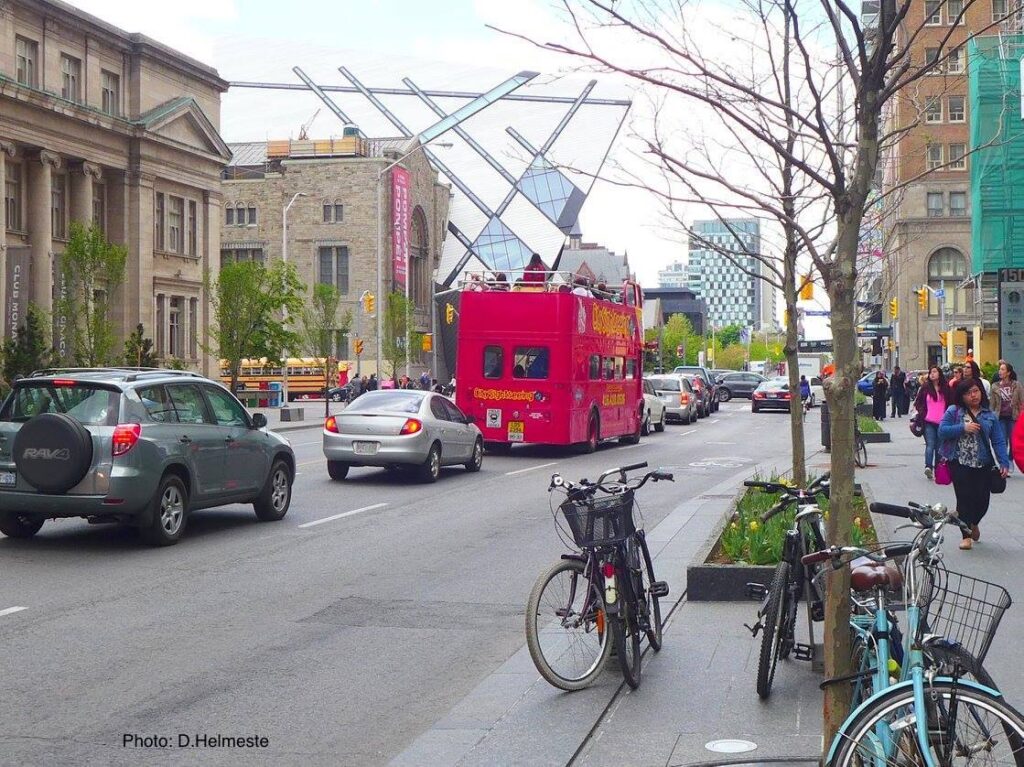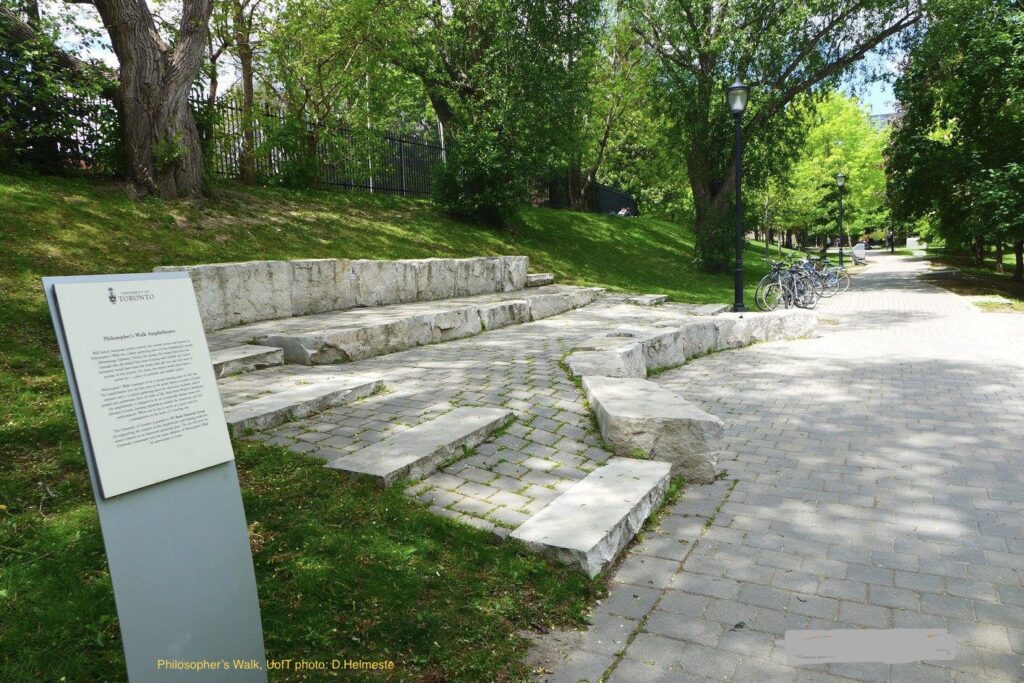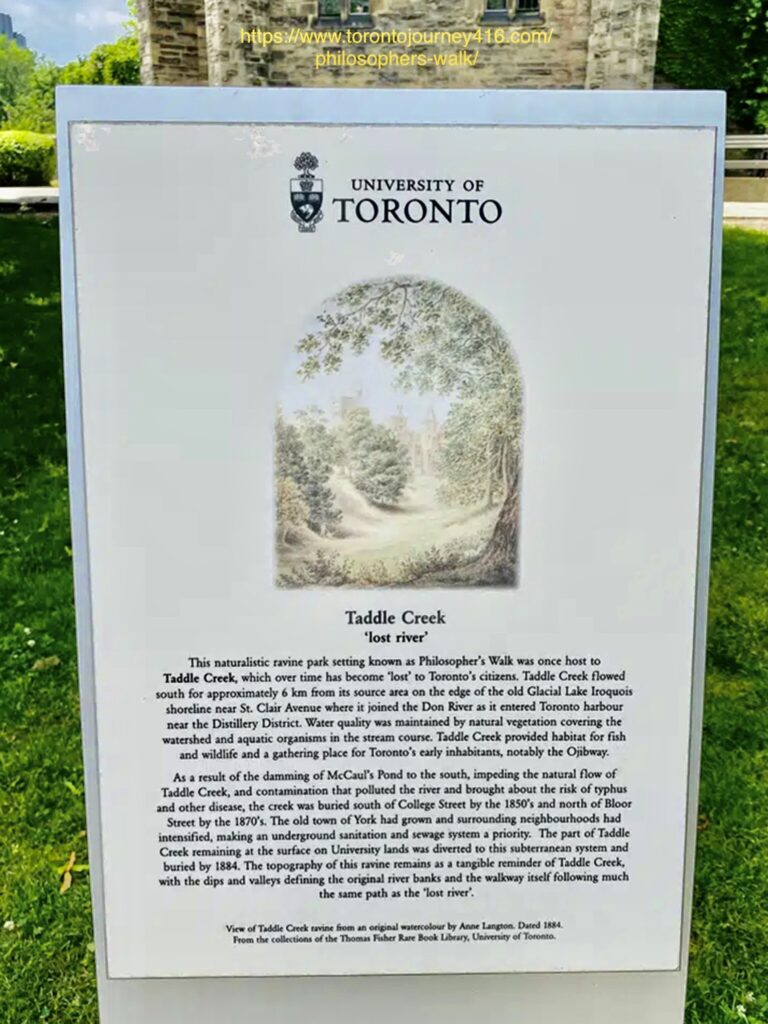
Since World War II, this university neighbourhood has also seen a relatively large influx of Baltic immigrants, who have contributed to both local and world history.

As we start our walk southward through the Alexandra Gates, we see the Royal Ontario Museum (ROM) on our left. Unknown to many visitors, the Royal Ontario Museum has a relatively large collection of Estonian textiles from the pre-World War II era.
There is also a smaller collection of Latvian textiles and amber from the same time period. Both are found in the Regional Textiles and Costumes of Europe Collection. ROM's smaller Latvian collection can be explained by the fact that the Latvian Canadian Centre at 4 Credit Union Drive in North York still keeps a large collection of heritage textiles on site, including a large collection of Latvian mittens. For students interested in doing research on these textiles, it should be possible to make an appointment to see specific items in person (as I have done at the ROM in the past). In the case of 19th century Latvian mittens, such as Vidridzi mittens, studying the techniques often gives surprising results. For example, the detailed patterns are often difficult to reproduce using today's methods.

Continuing our walk past the Royal Ontario Museum, we see the U of T law buildings on our left, which include the Bora Laskin Law Library. Here, as in the John P. Robarts Research Library and VEMU Estonian Museum Canada a few blocks away, we can find books written by Baltic authors who made significant contributions in their fields globally. For example, in the law library, we can find books such as Modern Logic in the Service of Law and other titles by Estonian author Ilmar Tammelo, who visited and lectured in Toronto and Kotkajärve Metsaülikool in the early 1980s.

Continuing along Philosopher's Walk, we reach Hoskin Street and then Hart House. Hart House, which opened on Remembrance Day in 1919, was built as a gathering place for students to study, socialize, and engage in arts and sports activities. Its Great Hall is famous for its heraldic display painted by Alexander Scott Carter. The north wall depicts the arms of 74 universities from British-allied countries during the First World War, while the British Royal Arms and the arms of the 51 universities in the Commonwealth at the time, are shown on the south wall of the Great Hall.

It is amazing to see the University of Dorpat (the present-day University of Tartu) arms on the north wall, especially since Estonia was newly independent! In fact, on December 12th, 1918, a British fleet did arrive in Tallinn bringing much needed supplies, as recorded in our history books. For students interested in the Great War (WWI), the Soldiers' Tower located at the South-West corner of Hart House is very much worth visiting. During a recent lecture by Daniel Hendrickson, chair of the Soldiers' Tower Committee, it was mentioned that two oak trees grown from acorns collected at the Battle of Vimy Ridge by Lieutenant Leslie Howard Miller are planted near Hart House, one on Hart House circle and another off Philosopher's Walk.
Continuing on our walk, we eventually loop back to Bloor Street West and Madison Avenue where VEMU Estonian Museum Canada is located and the new Estonian KESKUS is being built. With a new Estonian lecturer and courses, the new academic year at U of T promises to be an exciting one.



